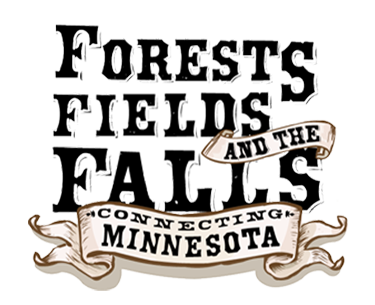How Dirty Was the Sleep Camp?
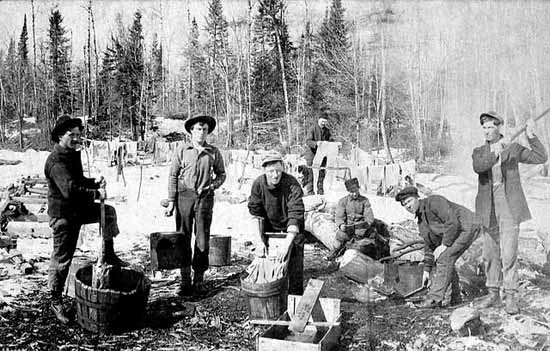
Lumberjacks doing their washing, ca. 1910.
Minnesota Historical Society Photograph Collection, Location No. HD5.7 r44, Negative No. 48654
"The bunkhouse shanty wasn't the cleanest place in the world…. In camp you made your own bed of marsh hay or balsam boughs, covered with blankets. Now and then you'd add some more boughs, and when the lice got awful itchy, you had to take the better part of Sunday to boil the blankets…. No lumberjack ever took a bath. There wasn't any place to take one, and besides, we didn't believe it very healthy to take a bath very often. A man might get pneumonia taking baths in the wintertime. Somehow you never got dirty. But you'd take your clothes and boil them every 3 or 4 weeks or something like that."
—Louie Blanchard
Walker D. Wyman and Lee Prentice, The Lumberjack Frontier; the Life of a Logger in the Early Days of the Chippeway, retold from the recollections of Louie Blanchard (Lincoln: University of Nebraska Press, 1969).
Wasn't It Cold at Night?
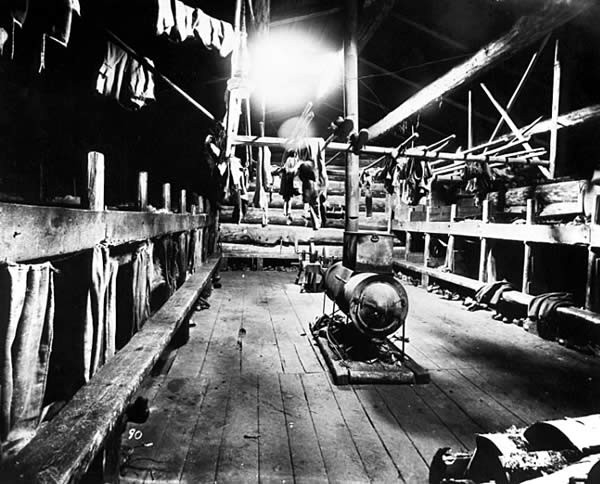
Interior, lumber camp bunkhouse, ca. 1910.
Minnesota Historical Society Photograph Collection, Location no. HD5.1 p6 Negative no. 33073
"The sleeping camp had bunks, one over the other, filled with straw; the deacon seat was built along the foot. there was a long stove in the center which was fired with four foot wood, mostly birch. Over the stove was a sky light which lifted up so as to freshen the air. The men nearest the stove got too warm during the night and opened the sky light. Then the men in the corners, or farthest away, got cold; so they got up and closed the sky light. This went on all night sometimes."
Joseph DeLaittre, A Story of Early Lumbering in Minnesota (Minneapolis: DeLaittre Dixon Co., 1969).
What Did They Do for Entertainment?
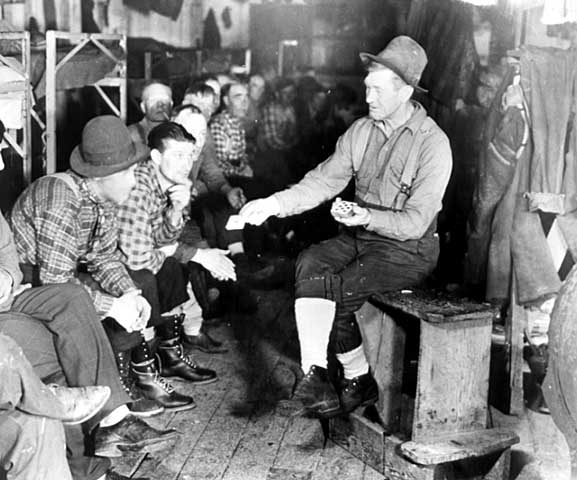
Loggers being entertained with card tricks in the bunkhouse at night, Camp Nine, Luce County, Michigan, ca. 1925.
Minnesota Historical Society Photograph Collection, Location no. HD5.1 p38 Negative no. 16803
"During the weekdays the lights had to go out at nine o'clock. But on Saturday there'd be an accordion player, or a violinist, or a harmonica or a mouth organ…. And you'd either wear a flour sack apron or you'd take a white handkerchief and tie it around your arm if you were going to be the lady of the square dance."
—Leonard Costley
Leonard Costley interview in Interviews with Pioneer Lumbermen, 1953-1957.
Minnesota Historical Society Manuscripts Collection P2385
What's That Boot?
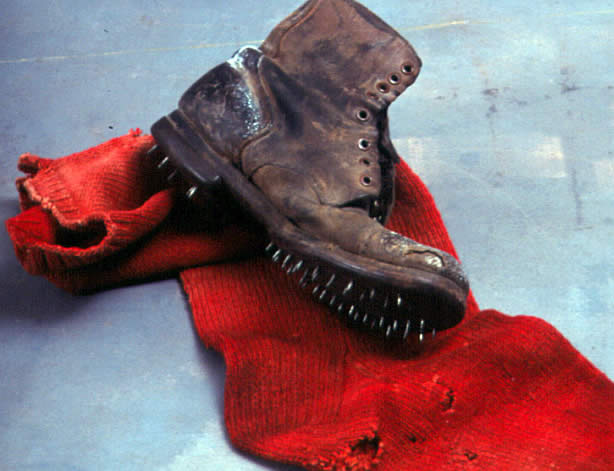
Cork boot and large sock
Minnesota Historical Society Museum Collections, Boot: 8174.85; Sock: 1985.183.5 A
"Old-time lumberjacks wore ankle-covering shoes with rows of metal nails on the sole. They were a heavy shoe with extra leather reinforcement at the rear and two rows of nails ('corks') sticking out ⅜ inch around the heels and soles to grip into the wet logs. They'd chip a floor fast and were usually carried when we left the river because they picked up chips, but the wooden sidewalks in Anoka got chopped by them. I paid $7 for handmade, waterproof river shoes, and for their inner construction they had wooden 'shoe pegs' instead of nails because the wooden pegs wouldn't rust."
—Ike Anderson
Ike Anderson, "Lumberjack Life on the Mississippi River, Spring and Summer at Brooklyn Township and Minneapolis, 1908-1909," in Tales of Local Lumberjacks, ed. Jane Hallberg (Brooklyn Historical Society, 1978).
